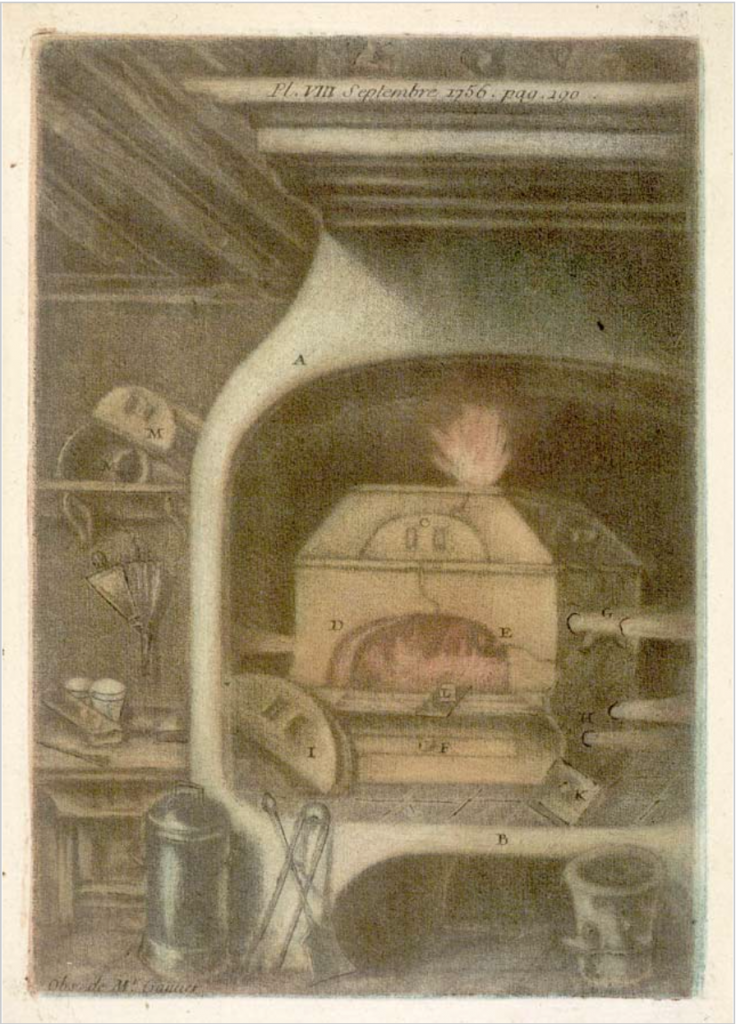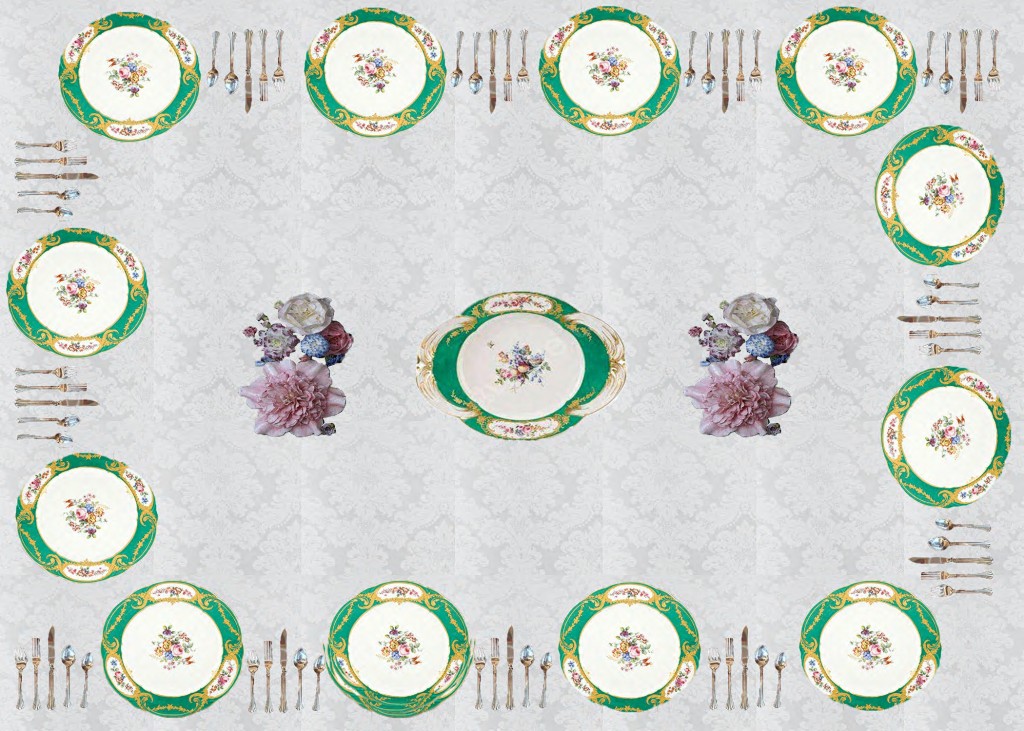vai-r poh-mme
 A Gallant Green
A Gallant Green
Vert pomme or apple green is a saturated Kelly green color that was invented in 1757 by Jean Hellot at the Sèvres manufactory. In large part thanks to the work of Denis Diderot in his efforts to publisize scientific advancements in his Encyclopedie, chemistry and physics were topics that individuals beyond university circles were able to grasp. The primary chemist at the Sèvres factory, Jean Hellot, was able to experiment with firing temperatures, pigmentation mixing, and glaze application in order to formulate new colors like vert pomme.

Courtesy of Sarah Lowengard’s ebook titled The Creation of Color in Eighteenth-century Europe. This image is a copy of Pierre-Henri Taunay (a Sèvres chemist) painting of a kiln at the manufactory.
It is imperative to understand that not only did the formulation of color creation take individuals within the Sèvres walls a lot of time, but so too did the production of porcelain wares. First the thrown ‘green ware,’ or unfired pottery, would be scheduled for firing in a furnace known as a kiln. At Sèvres, the soft-paste porcelain kilns were rectangular in shape with one firebox [see above image]. The fire box is where coal would be loaded and burned as fuel for the firing of the ceramic bodies. Depending on the shape and size of different pieces, different temperatures had to be reached and maintained for precise firing. The ‘biscuit pieces’, or fired unglazed porcelain bodies, would be let out to cool before the first round of glaze was applied. Glaze acts both as an aesthetic quality of porcelain but also serves as a sealant against penetration of liquids. In the case of the Sèvres ground colors, the glaze was mixed with fondant to assist in the fusion of the pigments during firing. In eighteenth-century porcelain speak, fondant was an ingredient that had a lower fusion point when fired such as borax or soda. The ground color pigments were applied over a majority of the ceramic bodies to provide a vibrant background on which motifs could later be added by the artisanal painters at Sèvres.

This image is meant to act as a visual guide for viewers to see a set of Sèvres plates together in a dining setting that is historically accurate in regards to eighteenth-century customs. This table setting displays twelve vert pomme plates atop a white damask table cloth in partnership with silver eighteenth-century cutlery, with a centerpiece of two Vincennes porcelain flower arrangements flanking a vert pomme Sèvres serving platter.
